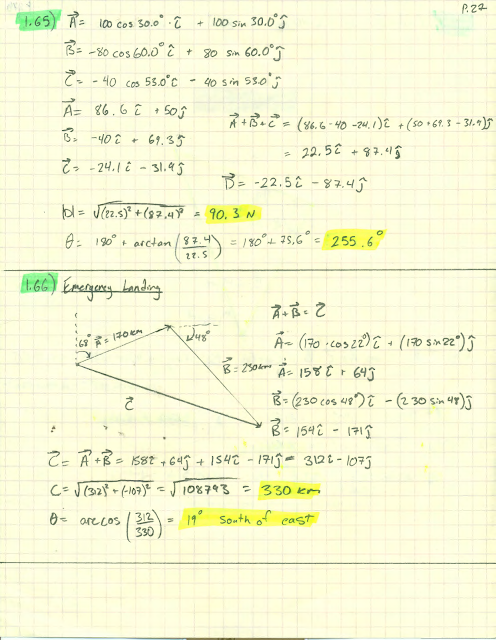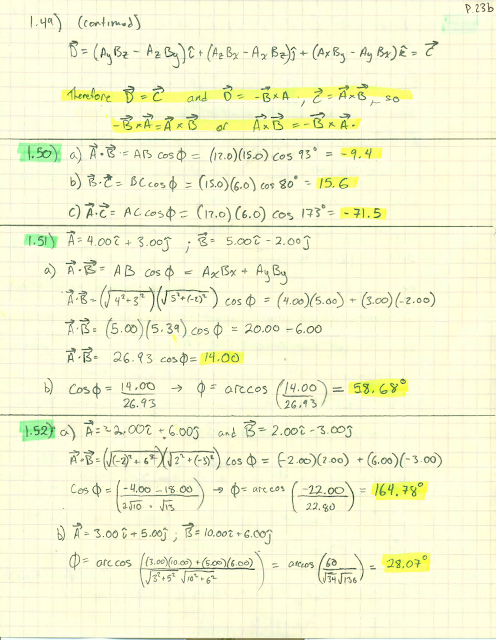1.88 When two vectors $\vec{A}$ and $\vec{B}$ are drawn from a common point, the angle between them is $\phi$. a) Using vector techniques, show that the magnitude of their vector sum is given by
$\sqrt{A^2 + B^2 +2AB\cos{\phi}}$
1.89 A cube is placed so that one corner is at the origin and three edges are along the x-, y-, and z-axes of a coordinate system (Fig. 1.35). Use vectors to compute a) the angle betwee the edge along the z-axis (line ab) and the diagonal from the origin to the opposite corner (line ad); b) the angle between line ac (the diagonal of a face) and line ad.
1.90 Obtain a unit vector perpendicular to the two vectors given in Problem 1.85.
1.91 You are given vectors $\vec{A} = 5.0\hat{i} - 6.5\hat{j}$ and $\vec{B} = -3.5\hat{i} + 7.0{j}$. A third vector $\vec{C}$ lies in the xy-plane. Vector $\vec{C}$. Vector $\vec{C}$ is perpendicular to vector $\vec{A}$, and the scalar product of $\vec{C}$ with $\vec{B}$ is 15.0 =. From this information, find the components of vector $\vec{C}$.
1.92 Two vectors $\vec{A}$ and $\vec{B}$have magnitude A = 3.00 and B = 3.00. Their vector product is $\vec{A} \times \vec{B} = -5.00\hat{k} + 2.00\hat{i}$. What is the angle between $\vec{A}$ and $\vec{B}$?
1.93 Later in our study of physics we will encounter quantities represented by $(\vec{A} \times \vec{B}) \cdot \vec{C}$. a) Prove that for any three vectors $\vec{A}$, $\vec{B}$, and $\vec{C}$, $\vec{A} \cdot (\vec{B}) \times \vec{C}) = (\vec{A} \times \vec{B}) \cdot \vec{C}$. b) Calculate $(\vec{A} \times \vec{B}) \cdot \vec{C}$ for the three vectors $\vec{A}$ with magnitude A = 5.00 and angle $\theta_A = 26.0^\circ$ measured in the sense from the +x-axis toward the +y-axis, $\vec{B}$ with B = 4.00 and $\theta_B = 63.0^\circ$, and $\vec{C}$ with magnitude 6.00 and in the +z-direction. Vectors $\vec{A}$ and $\vec{B}$ are in the xy-plane.



















































